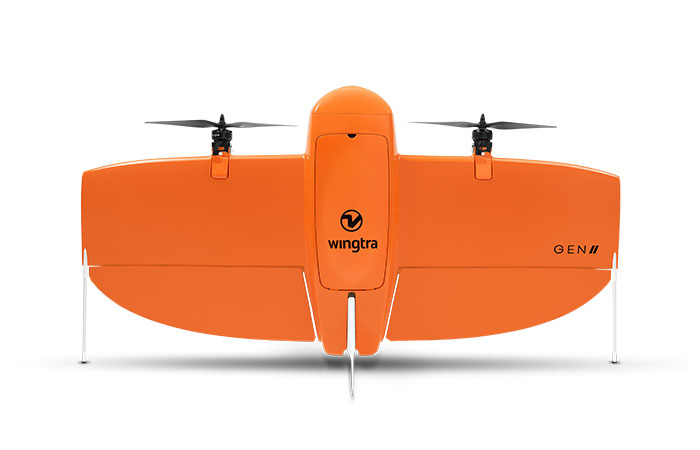Here's how the Wingtra VTOL system works:
Vertical Take-off: The WingtraOne starts its mission by taking off vertically, similar to a traditional quadcopter drone. This allows the drone to launch from small and confined spaces without requiring a runway or catapult.
Transition to Forward Flight: Once the WingtraOne reaches a safe altitude, it smoothly transitions from vertical flight to horizontal flight by tilting its wings. This transition enables the drone to operate more efficiently in forward flight mode, covering large distances at higher speeds.
Fixed-Wing Mapping: During the forward flight phase, the WingtraOne follows a pre-defined flight plan to efficiently map the target area. As a fixed-wing aircraft, it can achieve longer flight times and cover more extensive areas compared to pure multi-rotor drones.
Vertical Landing: After completing its mission, the WingtraOne switches back to vertical flight mode for landing. It descends vertically to the ground, ensuring a controlled and precise landing even in tight spaces or challenging terrain.

The Wingtra VTOL capability offers several advantages over traditional fixed-wing or multi-rotor drones:
Efficient Coverage: The transition to fixed-wing flight enables the WingtraOne to cover larger areas in a single flight, making it ideal for mapping and surveying large expanses of land.
Long Endurance: The fixed-wing design allows the drone to fly for extended periods, providing more flight time and reducing the need for frequent battery changes during missions.
Versatility: The ability to take off and land vertically gives the WingtraOne the flexibility to operate in areas with limited space, making it suitable for various industries and applications.
Precise Mapping: The combination of VTOL capability and high-quality sensors ensures accurate data capture and georeferencing, crucial for professional mapping and surveying projects.